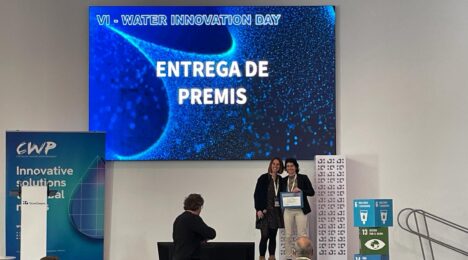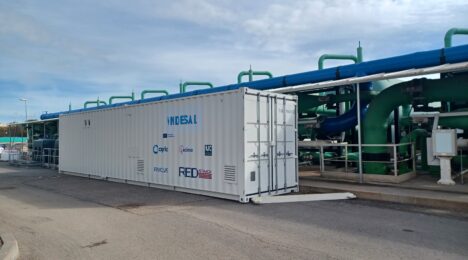World Water Day 2025: LIFE INDESAL Supports Glacier Preservation Through Sustainable Water Solutions
Brussels, 20 March 2025 – As the world marks World Water Day 2025, dedicated to the theme of Glacier Preservation, on 22 March 2025, the urgency of protecting our frozen water resources has never been clearer. Glaciers are melting at an alarming rate, disrupting the global water cycle and threatening the water security of nearly 2 billion people (UN-Water/UNESCO) who rely on glacier-fed rivers, snowmelt, and mountain runoff for drinking water, agriculture, and energy production.
As part of the global response to the water crisis, the LIFE INDESAL project is developing an innovative, integrated, and circular seawater desalination system with a low carbon footprint. By harnessing Low-pressure Multistage System Reverse Osmosis (LMS RO), a novel desalination technology that reduces energy use, and resource recovery technologies such as reverse electrodialysis (RED) and electrodialysis with bipolar membrane (EDBM), LIFE INDESAL demonstrates a sustainable way to produce safe freshwater while reducing energy consumption and environmental impact.
The LIFE INDESAL technological scheme composed by the LMS RO, RED andEDBM presents the potential to sensibly improve the seawater desalination. In the LIFE INDESAL project these three innovative processes are integrated in a flexible and modular pilot plant with an influent capacity of 8 m3/h and operated in real life conditions – Luca Sbardella, Project Manager, Innovation Department, ACCIONA Water Business
Desalination as a Climate Adaptation Solution
In a context of global warming and natural freshwater resources become increasingly unpredictable, desalination plays a vital role in securing water supplies for communities and industries. However, conventional desalination technologies face two main challenges: energy consumption and brine disposal.
The LIFE INDESAL project tackles these challenges through an integrated circular approach that recovers energy and valuable minerals from desalination brines. By incorporating LMS RO technology, the system has the potential to reduce energy consumption compared to conventional 2-pass desalination process. Moreover, the project seeks to integrate renewable energy production and recovery resources from brine, making desalination more sustainable in the context of climate change adaptation.
For the past year, the LMS RO pilot plant showed robust operation and the potential to improve flux distribution, achieving a balance and thus reducing possible energy losses. Due to this peculiarity, together with others, the LMS RO is expected to reduce the specific energy consumption of seawater desalination up to 0.2 kWh/m3, if compared to a conventional 2 pass reverse osmosis process. – Luca Sbardella, Project Manager, Innovation Department, ACCIONA Water Business
Pilot Plant in Spain
LIFE INDESAL aims at demonstrating at pilot scale (8 m3/h) under real environmental conditions. The three technologies have been integrated in a pilot unit (PU), fully automated and highly equipped with online sensors and analysers to control and monitor the processes and enable continuous operation in San Pedro del Pinatar II seawater desalination plant in Murcia (Spain), property of Mancomunidad de los Canales del Taibilla (MCT).
Data from the PU performance will be used to conduct a projection of a 450,000 m3 /d seawater reverse osmosis (SWRO) plant that incorporates the LIFE INDESAL solution.
The environmental impacts of the project under different categories are being assessed and will be compared to a conventional SWRO plant, clearly quantifying the associated benefits.
The Mancomunidad de los Canales del Taibilla (MCT), an autonomous organism dependent on the Estado de Medio Ambiente del Ministerio para la Transición Ecológica y el Reto Demográfico, is acknowledged for enabling the installation of the pilot plant and supply of services.




